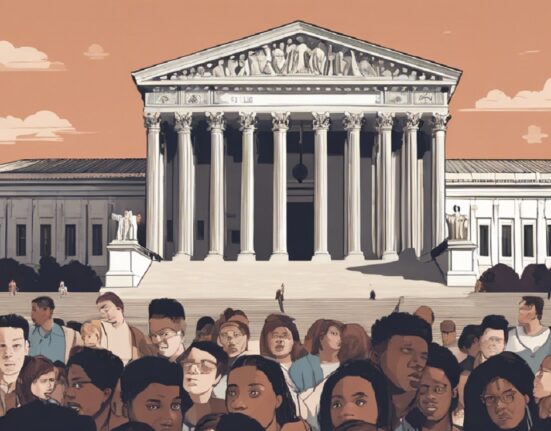Latinx artists and activists have long played a pivotal role in shaping cultural narratives and advocating for social justice. Their contributions extend beyond mere artistic expression; they serve as powerful voices for marginalized communities, addressing issues such as immigration, racial equity, and economic disparity. The Latinx community, which encompasses a diverse range of backgrounds, experiences, and perspectives, has produced a rich tapestry of talent that reflects the complexities of their identities.
This article explores the intersection of art and activism within the Latinx community, highlighting the transformative power of creative expression in the fight for equity and justice. As we delve into the world of Latinx artists and activists, it is essential to recognize the historical context that has shaped their work. From the Chicano civil rights movement to contemporary social justice movements, Latinx individuals have utilized art as a means of resistance and empowerment.
Their narratives often challenge dominant cultural paradigms, offering alternative viewpoints that resonate with broader audiences. By examining the contributions of these artists and activists, we can better understand how their work not only enriches our cultural landscape but also serves as a catalyst for meaningful change.
Key Takeaways
- Latinx artists and activists play a crucial role in advocating for social change and justice within their communities.
- Art and culture have the power to inspire, educate, and mobilize people towards activism and social movements.
- Latinx artists use their platform to address issues such as immigration, racism, and gender equality, bringing attention to important social issues.
- Latinx activists incorporate art into their advocacy efforts to engage and connect with their audience in a meaningful and impactful way.
- Latinx artists and activists face challenges and resistance, including lack of representation, funding, and systemic barriers, in their pursuit of social change and justice.
The Power of Art and Culture in Activism
The Power of Storytelling
In the realm of activism, art serves as a vehicle for storytelling, allowing marginalized voices to be heard and understood. Through various mediums—be it visual art, music, dance, or literature—artists can convey complex social issues in ways that resonate deeply with individuals from all walks of life.
Celebrating Heritage, Challenging Injustice
Cultural expressions rooted in the Latinx experience often reflect the struggles and triumphs of their communities. These artistic endeavors not only celebrate heritage but also challenge systemic injustices.
Fostering Solidarity and Collective Action
By weaving together personal narratives with broader societal themes, Latinx artists create a space for dialogue and reflection. This cultural engagement is crucial in fostering solidarity among different groups, as it highlights shared experiences while honoring unique identities. Ultimately, the power of art lies in its ability to mobilize communities and inspire collective action toward a more equitable future.
Latinx Artists Using Their Platform for Change

Many Latinx artists have harnessed their creative platforms to advocate for social justice and raise awareness about pressing issues affecting their communities. For instance, renowned visual artist Judy Baca has dedicated her career to addressing themes of identity, migration, and social justice through large-scale murals that tell the stories of marginalized populations.
Similarly, musicians like Residente and La Santa Cecilia use their art to address political issues such as immigration reform and police brutality. Their lyrics often reflect the struggles faced by Latinx communities, resonating with listeners who share similar experiences. By infusing their music with messages of resistance and empowerment, these artists inspire their audiences to engage in activism and advocate for change.
The impact of their work extends beyond entertainment; it serves as a rallying cry for justice and equality.
How Latinx Activists Are Incorporating Art into Their Advocacy
Latinx activists are increasingly recognizing the importance of art in their advocacy efforts. By collaborating with artists, they can amplify their messages and reach wider audiences. For example, organizations focused on immigrant rights often partner with visual artists to create compelling imagery that captures the urgency of their cause.
These collaborations not only enhance the visibility of social issues but also foster a sense of community among activists and artists alike. Moreover, art-based activism allows for innovative approaches to traditional advocacy methods. Activists are using street art, performance pieces, and multimedia installations to engage the public in meaningful conversations about social justice.
These creative expressions invite individuals to reflect on their own beliefs and biases while encouraging them to take action. By integrating art into their advocacy strategies, Latinx activists are able to create immersive experiences that resonate on both intellectual and emotional levels.
Challenges and Resistance Faced by Latinx Artists and Activists
Despite their significant contributions, Latinx artists and activists often face numerous challenges and resistance in their pursuit of social change. Systemic barriers such as funding disparities, lack of representation in mainstream media, and cultural appropriation can hinder their efforts to amplify their voices. Many artists struggle to secure resources necessary for their projects, limiting their ability to reach broader audiences or fully realize their creative visions.
This resistance can manifest in various forms, from censorship to outright hostility toward their messages. Such challenges can be disheartening; however, they also serve as a testament to the importance of the work being done by these artists and activists.
Their resilience in the face of adversity underscores the necessity of continuing to fight for equity and representation within both the arts and broader society.
Examples of Successful Collaborations between Latinx Artists and Activists

Visual Storytelling for Social Change
One notable instance of collaboration is the “Undocumented” project by Favianna Rodriguez, which combines visual art with storytelling to highlight the experiences of undocumented immigrants. Through her work, Rodriguez has created a platform for individuals to share their stories while raising awareness about immigration issues.
Unifying Voices for Women’s Rights
Another powerful collaboration is seen in the “Mujeres de Maiz” collective, which brings together women artists from diverse backgrounds to address issues such as gender-based violence and reproductive rights. By uniting their talents and perspectives, these artists create compelling works that challenge societal norms while advocating for women’s rights within the Latinx community.
Amplifying Voices and Fostering Solidarity
Such collaborations not only amplify individual voices but also foster a sense of solidarity among artists and activists working toward common goals.
The Importance of Representation and Visibility in Latinx Art and Activism
Representation is crucial in both art and activism; it ensures that diverse voices are heard and acknowledged within societal discourse. For Latinx artists and activists, visibility is essential in challenging stereotypes and dismantling systemic barriers that perpetuate inequality. When Latinx individuals see themselves represented in art and activism, it fosters a sense of belonging and empowerment that can inspire future generations to engage in advocacy.
Moreover, increased representation within mainstream media can lead to greater awareness of the issues facing Latinx communities. As more artists share their stories and experiences through various platforms, they contribute to a broader understanding of cultural diversity. This visibility not only enriches our collective narrative but also encourages dialogue around important social issues that require urgent attention.
The Future of Latinx Art and Activism
The future of Latinx art and activism is bright, fueled by a new generation of artists and advocates who are committed to creating meaningful change. As technology continues to evolve, so too do the methods by which these individuals share their work and engage with audiences. Social media platforms provide unprecedented opportunities for artists to connect with supporters, share their messages, and mobilize communities around critical issues.
Furthermore, as society becomes increasingly aware of the importance of diversity and inclusion, there is a growing recognition of the value that Latinx artists bring to cultural conversations. This shift presents an opportunity for greater collaboration between artists, activists, institutions, and policymakers—ultimately leading to more equitable outcomes for marginalized communities. In conclusion, Latinx artists and activists are at the forefront of a movement that seeks to redefine cultural narratives while advocating for social justice.
Their work exemplifies the power of art as a tool for change, inspiring individuals to engage in meaningful conversations about equity and representation. As we look toward the future, it is imperative that we continue to support these voices—recognizing that their contributions benefit not only their communities but society as a whole.
FAQs
What is the significance of Latinx artists and activists in the fight for social change?
Latinx artists and activists play a crucial role in advocating for social change by using their creative talents to raise awareness about important issues affecting their communities. Through their art and activism, they are able to amplify marginalized voices and challenge systemic injustices.
How do Latinx artists and activists use culture as a tool for resistance?
Latinx artists and activists use culture as a tool for resistance by creating art, music, literature, and other forms of expression that reflect their experiences and struggles. They also use cultural events and platforms to promote social and political change, reclaim their heritage, and challenge stereotypes.
What are some examples of Latinx artists and activists making an impact through their work?
Some examples of Latinx artists and activists making an impact through their work include visual artists using their art to address issues such as immigration and identity, musicians using their music to advocate for social justice, and writers using their literature to tell the stories of their communities.
How does the work of Latinx artists and activists contribute to the broader social justice movement?
The work of Latinx artists and activists contributes to the broader social justice movement by shedding light on the unique challenges faced by Latinx communities, building solidarity with other marginalized groups, and advocating for policies and systemic changes that address inequality and discrimination.









